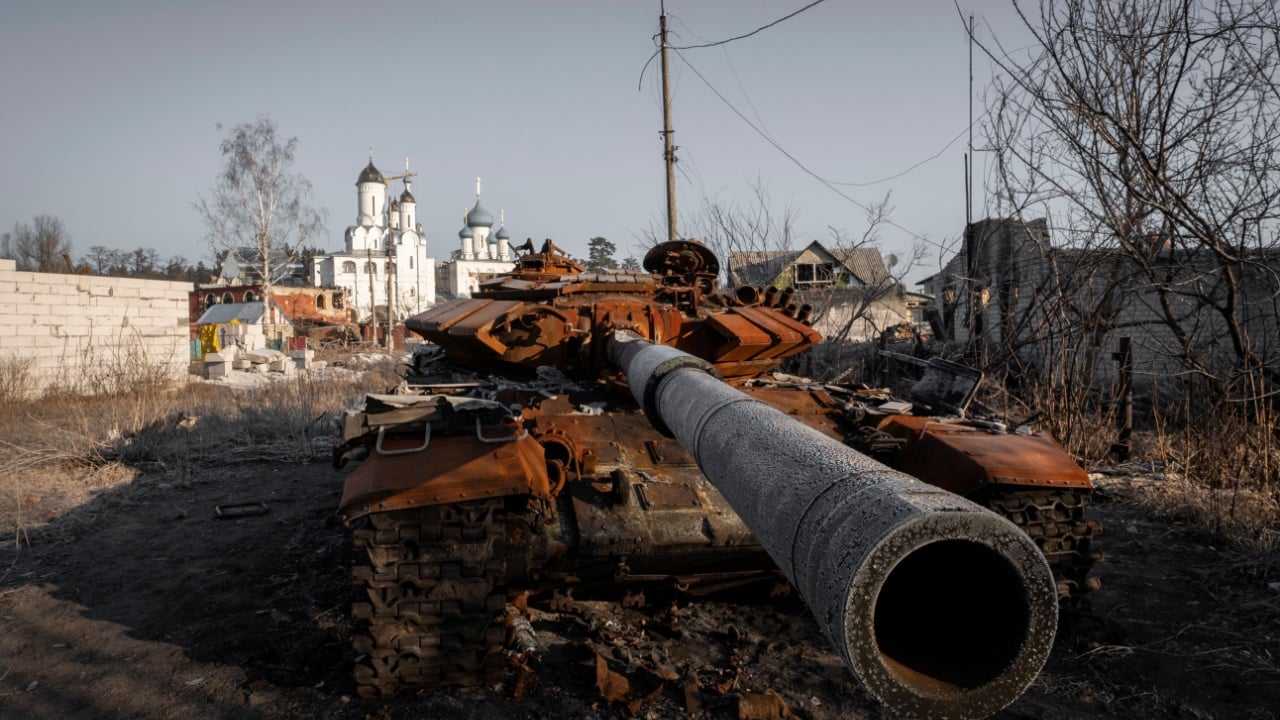In the wake of the most recent Russian missile barrages against Ukraine, including the attack that struck the Okhmatdyt Children’s Hospital in Kyiv, voices across Europe and North America have been raised to insist that no negotiations are possible with the Kremlin. However, while direct diplomatic talks are not on the table, it is a mistake to think that negotiations aren’t happening.
Just as Robert McNamara described the quarantine during the Cuban Missile Crisis as a form of language by which President John F. Kennedy was communicating with Soviet leader Nikita S. Khrushchev, we can see the outline of the negotiations that are currently underway—between Ukraine and Russia, between Ukraine and its Western partners, and between the United States and Russia.
The first “negotiation” is over the terms of Ukraine’s integration into the key institutions of the Euro-Atlantic world. My prediction is that what I term “core Ukraine” will be integrated as a full member of both the European Union and the North Atlantic Treaty Organization. What remains now is the question of timetable and conditionality. If Moscow was hoping that a wave of Euro-skeptical political forces would come to power in elections across Europe and close the door on Ukraine—recent trends have shown this is not a winning strategy.
In fact, Ukrainian integration will, in turn, answer the tortured post-1991 question of where “Europe” (in an institutional sense for purposes of state accession to the Washington and Rome Treaties) ends. Beyond the Ukraine-Russia line of control lies “not Europe.”
The subsidiary negotiations will depend, in part, on the balance of forces, political will, and the occurrence of further crises in the Middle East and Asia-Pacific. The result could take the form of a neutral zone between Russia and “core Ukraine,” a demilitarized region, a de facto acceptance of the front lines as reflecting lines of control, or a greater NATO presence in Poland and Romania that provides an effective deterrence umbrella over Ukraine without projecting power into the Russian heartland. At this juncture, it is vital to avoid a binary mindset and embrace the possibility of a number of options.
If the Ukraine-Russia line is the institutional border between Europe and non-Europe, the question becomes whether that line is a non-permeable barrier (like the demilitarized zone on the Korean Peninsula) or whether there are points of contact and even defined corridors. Hikmat Hajiyev, an advisor to Azerbaijan’s president Ilham Aliyev, announced in June 2024 that Azerbaijan was serving as a “facilitator” in an effort to explore ways to transit Russian natural gas across Ukraine to reach customers in other parts of Europe. But if the post-conflict Russia-Ukraine line becomes a sealed, impassable zone, then we are likely to see the further development and institutionalization of the so-called “Eurasian roundabout” by which Europe-Russia trade occurs via the countries of the Caucasus and Central Asia.
With Europe’s institutional border fixed along whatever the Ukraine-Russia line of control ends up being—whether coterminous with or separate from the 1991 internationally recognized borders—the process of delineation will turn to whether or not that line will encompass Belarus and Moldova (in whatever form the latter exists). For Belarus, of course, this question is also intimately tied up with its domestic political future—but in the wake of Ukraine’s fate over the last several years, Belarus’ politicians, especially in a post-Lukashenko future, might opt for something approximating Azerbaijan’s embrace of dynamic, transactional neutrality. This will also depend on whether or not Belarus decides it wants to embrace a multivector strategy similar to Vietnam’s in terms of serving as one of the interconnectors between the Western-led and Chinese-centered global trading systems and also to become an additional component of any “Eurasian roundabout.”
The Mediterranean serves as Europe’s southern frontier. NATO’s defense zone ends at the Turkish borders with Syria, Iraq, and Iran. Increasingly, the plausibility of a Turkish entry into the EU strains credulity, so the European zone begins to dissipate at the Anatolian heartland. That leaves the South Caucasus. For Armenia, which is trying to disentangle itself from its long-established alliance with Russia, and Georgia, whose dreams of full Euro-Atlantic integration have been dashed in the past, the question will be whether to continue to pin hopes on Washington and Brussels continuing with an enlargement process. The alternative option is exploring ways of joining with other Silk Road states to set up the Middle Corridor as the primary trade linkage between the Indo-Pacific and Euro-Atlantic worlds.
The negotiations are currently taking place on the battlefield (the physical zones of combat, as well as in cyberspace and financial markets). They will eventually return to the diplomatic realm, and when they do, I believe these are the parameters on which the talks will take place.
Nikolas K. Gvosdev is the director of the National Security Program at the Foreign Policy Research Institute.
Image: Golovach Oleg / Shutterstock.com.

